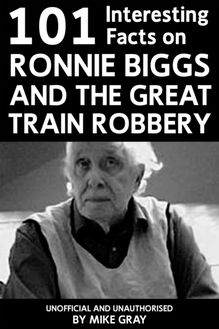-
 Univers
Univers
-
 Ebooks
Ebooks
-
 Livres audio
Livres audio
-
 Presse
Presse
-
 Podcasts
Podcasts
-
 BD
BD
-
 Documents
Documents
-
- Cours
- Révisions
- Ressources pédagogiques
- Sciences de l’éducation
- Manuels scolaires
- Langues
- Travaux de classe
- Annales de BEP
- Etudes supérieures
- Maternelle et primaire
- Fiches de lecture
- Orientation scolaire
- Méthodologie
- Corrigés de devoir
- Annales d’examens et concours
- Annales du bac
- Annales du brevet
- Rapports de stage
La lecture à portée de main
Vous pourrez modifier la taille du texte de cet ouvrage
Découvre YouScribe en t'inscrivant gratuitement
Je m'inscrisDécouvre YouScribe en t'inscrivant gratuitement
Je m'inscrisEn savoir plus
Vous pourrez modifier la taille du texte de cet ouvrage
En savoir plus

Description
Sujets
Informations
| Publié par | Andrews UK |
| Date de parution | 30 juin 2014 |
| Nombre de lectures | 0 |
| EAN13 | 9781910295342 |
| Langue | English |
Informations légales : prix de location à la page 0,0124€. Cette information est donnée uniquement à titre indicatif conformément à la législation en vigueur.
Extrait
Title Page
101 INTERESTING FACTS ON BRITAIN’S TRUE LIFE CRIMES
By
Mike Gray
Publisher Information
First published as an eBook
in 2014 by Apex Publishing Ltd
12A St. John’s Road, Clacton on Sea,
Essex, CO15 4BP, United Kingdom
www.apexpublishing.co.uk
Please email any queries to Chris Cowlin
mail@apexpublishing.co.uk
Digital Edition converted and published by
Andrews UK Limited 2014
www.andrewsuk.com
Copyright © 2014 Mike Gray
The author has asserted his moral rights
All rights reserved. This book is sold subject to the condition, that no part of this book is to be reproduced, in any shape or form. Or by way of trade, stored in a retrieval system or transmitted in any form or by any means, electronic, mechanical, photocopying, recording, be lent, re-sold, hired out or otherwise circulated in any form of binding or cover other than that in which it is published and without a similar condition, including this condition being imposed on the subsequent purchaser, without prior permission of the copyright holder.
About the Author
Mike Gray was born in 1957 in Lambeth, London. Mike was good friends with train robber Ronnie Biggs and has written various books on him and the great train robbery.
Facts Derek ‘Bertie’ Smalls: Violent gang crime was almost out of control in London during the 1970s. Armed bank robberies were common and the police were struggling to find the men behind these highly organised crimes. Derek ‘Bertie’ Smalls was frequently involved in robberies but when the police finally caught up with him, he made history by becoming the first major informer in Great Britain. Smalls made a deal with Scotland Yard; he would provide them with information in relation to bank jobs going back several years, including the names of those responsible, in exchange for immunity from prosecution. Smalls became the UK’s first ‘supergrass’ and information provided by him led to the conviction of several career criminals, including the Wembley Bank Robbers. Bertie Smalls died in 2008. Rachel Nickell (Wimbledon Common Murder): On 15 July, 1992, Nickell was sexually assaulted and stabbed to death on Wimbledon Common, in front of her two-year-old son. A police investigation put Colin Stagg in the frame as a suspect but there was no forensic evidence to back this up. The police set up a ‘honeytrap’, with undercover officer ‘Lizzie James’ posing as a potential girlfriend, to push Stagg into confessing to Nikell’s murder, which he failed to do. Stagg was charged and later acquitted. The controversial methods used in the investigation received a great deal of criticism. The case was reopened by Scotland Yard in 2002 and advanced forensic techniques led the police to a new suspect. Convicted sex killer, Robert Napper, pleaded guilty to Nickell’s manslaughter in December 2008, on the grounds of diminished responsibility. Napper was sentenced at the Old Bailey and is being held indefinitely at Broadmoor High Security hospital. Brink’s-Mat Robbery: Took place on 26 November, 1983. A gang of robbers broke into the Brink’s-Mat warehouse at Heathrow Airport, London. The six-man team gained entry to the warehouse from a security guard with the intention of stealing £3 million in cash. Once inside, the robbers doused staff in petrol and threatened them with a lit match if they did not reveal the combination to the vault. To their surprise, the gang discovered three tonnes of gold bullion and made off with gold, diamonds and cash worth £26 million (£75 million in today’s money). It was described at the time as ‘the crime of the century’. The Hull Arsonist: Bruce George Peter Lee (born Peter Dinsdale) is a self-confessed arsonist, responsible for the deaths of 26 people (11 of these were overturned on appeal). Lee is one of the UK’s most prolific killers but the case failed to attract much media attention, partly because he was charged with manslaughter rather than murder, and because the Yorkshire Ripper trial dominated the press at the time. Hull was caught in connection with a fire in Hull in which two young boys died and later confessed to several more arson attacks. Lee was sentenced to life imprisonment in 1981. Stephen Jory: Great Britain’s most infamous counterfeiter. Stephen Jory started his career in fakery by decanting cheap perfume into designer bottles and selling it as the genuine article. He admitted to counterfeiting £50 million worth of bank notes with his accomplices in the ‘Lavender Hill Mob’, but authorities suspect that the number was far higher. Between 1993 and 1998, Jory’s fake currency was believed to make up two thirds of the counterfeit bank notes in circulation and could pass UV counterfeit detectors. When Jory and other members of the Lavender Hill Mob were arrested, the Bank of England brought out a new £20 note with more sophisticated security measures. Linda Calvey (the ‘Black Widow’): Calvey was an armed robber and murderer. She earned the nickname the ‘Black Widow’ because all of her lovers ended up in prison or dead. Calvey was sent to prison for killing Ronnie Cook in 1990. She spent 18 and a half years in prison for Cook’s murder and had previously served three and a half years for robbery. At the time of her release in 2008, Calvey was the UK’s longest serving female prisoner. Mary Ann Cotton: An English serial killer during the 19 th century, who was suspected of murdering as many as 21 people by arsenic poisoning, including her own children. Cotton’s murder spree began with her first husband in 1865. She took no mercy on her victims, killing her husbands, mother and friend, usually to collect the insurance money. When her seven-year-old stepson, Charles Edward Cotton, died a post-mortem revealed traces of arsenic in his body and Mary Ann was arrested. She was found guilty of multiple murders and hanged. The Jersey Monster: Edward Paisnall was a notorious sex offender who terrorised women and children in Jersey, in the Channel Islands, during the 1960s. Paisnall would strike at night, breaking into victims’ homes wearing a distinctive rubber mask, causing him to become known as ‘the Beast of Jersey’. Paisnall was stopped by police in July, 1971, after jumping a red traffic light and attempting to evade arrest. In the car, which had been stolen, police discovered parts of Paisnall’s ‘beast’ costume. He was convicted of 13 counts of assault, rape and sodomy in 1971 and sentenced to 30 years in prison. Paisnall died in 1994. William Lobban: One of Glasgow’s most notorious criminals. Lobban was born in Exeter Prison to a violent, schizophrenic mother and endured a bleak childhood in the East End of Glasgow. At the age of 15, he masterminded a daring break-in to a Glasgow pub and a life of violent crime followed. Lobban was in and out of prison and was involved in some of the most serious prison riots of recent years. He developed a close association with the infamous Paul Ferris, who later pointed the finger at him for the murder of fellow gangster, Arthur Thompson Jr. Lobban was released from prison in 1998 and turned his back on a life of crime. He has subsequently published his autobiography. Graham Young: A poisoner and serial killer who became known as the ‘teacup poisoner’. Young was fascinated by poisons and the effect they had on people from a young age and began experimenting on his family. He was sent to Broadmoor Hospital in 1962 after poisoning several members of his family, resulting in his stepmother’s death. When he was released in 1971, Young poisoned 70 more people, killing two of them. Young was sent to Parkhurst Prison on the Isle of Wight, where he died in August 1990. Cynthia Payne : Infamous madam and party hostess. Payne came to the public’s attention for running a brothel in Streatham, South London, during the 1970s and ‘80s. Payne first hit the headlines in 1978 when police raided her home and discovered a sex party in progress. Respectable men paid with luncheon vouchers for ‘special services’; dressing up in lingerie and being spanked by young women. As a result, Payne served four months in Holloway Prison. The police raided her home again in 1986, when she was found to be hosting another ‘special party’. Payne was acquitted but the resulting court case created a blaze of publicity. Payne has now retired to Sussex. Kenny Noye : Serving a life sentence for the murder of 21-year-old Stephen Cameron in a road rage incident in 1996. Noye was involved in the laundering of gold bullion stolen during the Brink’s-Mat robbery. While under investigation, Noye stabbed to death Detective Constable John Fordham who was involved in police surveillance of his home.
-
 Univers
Univers
-
 Ebooks
Ebooks
-
 Livres audio
Livres audio
-
 Presse
Presse
-
 Podcasts
Podcasts
-
 BD
BD
-
 Documents
Documents
-
Jeunesse
-
Littérature
-
Ressources professionnelles
-
Santé et bien-être
-
Savoirs
-
Education
-
Loisirs et hobbies
-
Art, musique et cinéma
-
Actualité et débat de société
-
Jeunesse
-
Littérature
-
Ressources professionnelles
-
Santé et bien-être
-
Savoirs
-
Education
-
Loisirs et hobbies
-
Art, musique et cinéma
-
Actualité et débat de société
-
Actualités
-
Lifestyle
-
Presse jeunesse
-
Presse professionnelle
-
Pratique
-
Presse sportive
-
Presse internationale
-
Culture & Médias
-
Action et Aventures
-
Science-fiction et Fantasy
-
Société
-
Jeunesse
-
Littérature
-
Ressources professionnelles
-
Santé et bien-être
-
Savoirs
-
Education
-
Loisirs et hobbies
-
Art, musique et cinéma
-
Actualité et débat de société
- Cours
- Révisions
- Ressources pédagogiques
- Sciences de l’éducation
- Manuels scolaires
- Langues
- Travaux de classe
- Annales de BEP
- Etudes supérieures
- Maternelle et primaire
- Fiches de lecture
- Orientation scolaire
- Méthodologie
- Corrigés de devoir
- Annales d’examens et concours
- Annales du bac
- Annales du brevet
- Rapports de stage











